Compatibility of peppers and cucumbers in the same greenhouse and their planting
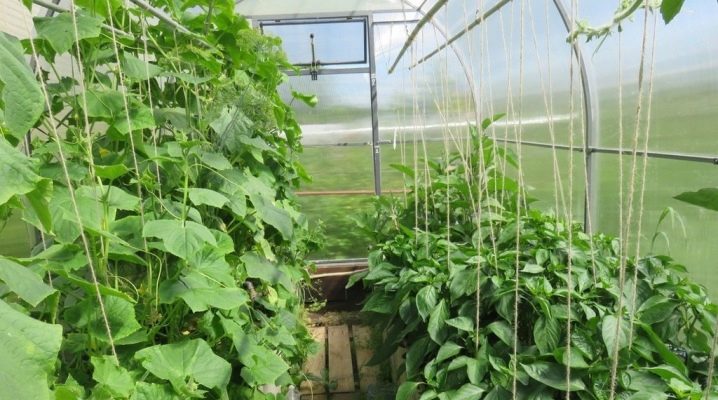
Novice summer residents often wonder which vegetable crops are compatible, and which in no case should be planted nearby. This is especially true for growing vegetables such as cucumber and pepper in greenhouse conditions. Despite the fact that these 2 plants belong to different families, when planted together, you can achieve good yields if agrotechnical conditions are observed.

Pros and cons of neighborhood
Cucumbers belong to the pumpkin genus, and peppers to the nightshade. Despite this, vegetables have a lot in common in terms of cultivation and show excellent compatibility when grown in the same greenhouse:
- plants are thermophilic and grow at similar temperatures + 22 ... 25 degrees;
- the same humidity, which should be no more than 60%;
- watering is about the same, so you do not need to worry that someone will not have enough moisture;
- do not tolerate sudden temperature changes, as well as drafts;
- prefer to grow on fertile soils;
- respond positively to mineral and organic fertilizers;
- grow well in sunny places;
- when grown together, show excellent yields;
- the same methods of pest and infection control.



Despite the great identity, some peculiarities should also be taken into account.
- Cucumbers are a vine that grows to a height of 2 meters or more, which can lead to a certain shading of the greenhouse. In this case, it is necessary to correctly distribute the places for planting crops so that they do not interfere with each other. Due to a lack of lighting, nightshades lag behind in development or stop altogether.
- Sweet and hot peppers should not be planted in the same greenhouse, as they can become over-pollinated, as a result of which the bitter pepper will lose its piquancy. It is advisable to plant varieties that are as similar as possible to each other.


Selection of varieties
When starting to plant vegetables, you should carefully select the varieties of peppers and cucumbers. Not all species can be planted in the same area. Since cucumbers already fill most of the greenhouse, peppers should be chosen undersized, reaching no more than 40-50 cm in height.
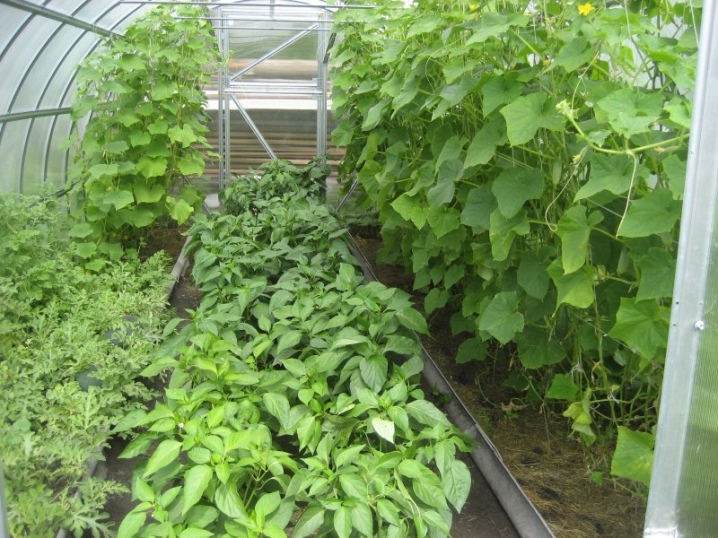
Therefore, it is necessary to carefully study the characteristics of a particular variety.
So, the ideal representatives of nightshades can be salad species, such as "Kakadu" or "California miracle"that have the same growing conditions and get along well with cucumbers.

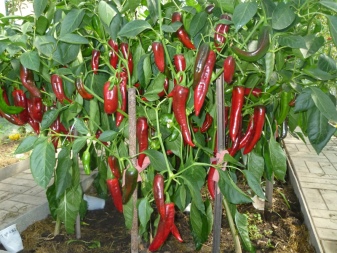
Landing nuances
Since the area of the greenhouse is rather limited, it is necessary to place the plants correctly, so that they do not interfere with each other. The best option is to separate the beds with paths. If the area permits, then between the beds leave from 50 to 100 cm, between the plants - 20 - 25 cm.

Pepper is a more thermophilic culture, so it is better to plant it from the south side, and cucumbers from the north, so moisture evaporation will occur more slowly. In addition, tall cucumbers get to the light much easier than stunted peppers. Due to the fact that cucumbers grow strongly, they are given more space in the greenhouse. Pepper bushes can be compacted - 3-4 pieces are planted on one square meter.
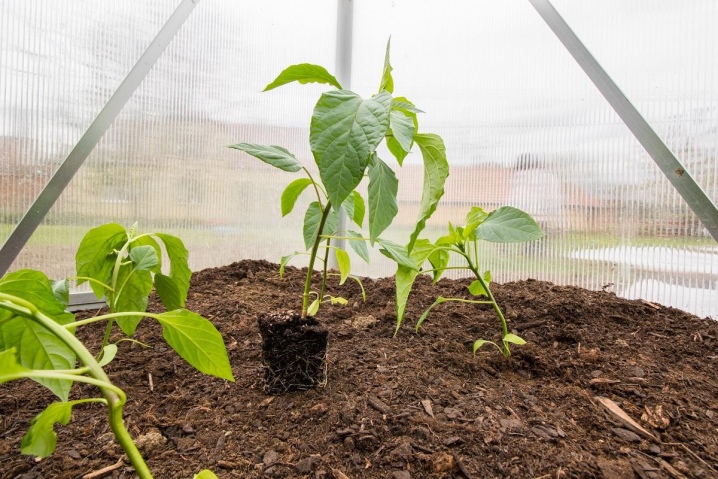
In summer, the weather is hot, the temperature in the greenhouse is even higher, so regular ventilation is mandatory. However, it is important not to allow drafts: these vegetables categorically do not tolerate them.
Several rules must be followed in order to properly place vegetable crops together.
- It is advisable to divide the plants planted nearby with a partition made of polyethylene, plywood or slate. Peppers are less demanding on the amount of irrigation than cucumbers. This is the easiest and most effective way to care.
- The greenhouse can be divided into 2 parts. Plant pepper on the right, cucumbers on the left. The distance between them is at least 60 cm. This also simplifies maintenance, and there is no cross-pollination. In addition, the plants will not cause each other any problems.
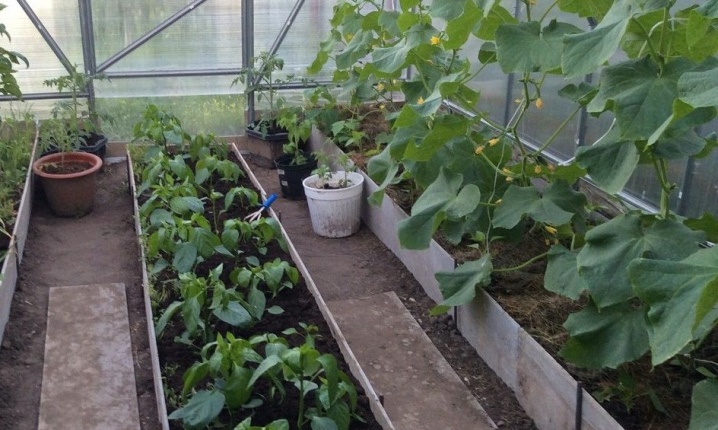
The preference for the composition of the soil in vegetables is the same. Garden soil is enriched with peat, humus or compost, sawdust. To increase yields, plants need artificial pollination. You can put a beehive next to the greenhouse, and in good weather the insects will pollinate the flowers. Another option is to plant honey flowers next to the greenhouse, which will attract bees with their scent.


To date, domestic breeders have created hybrids of both crops that do without insect pollination. Such varieties form exclusively female inflorescences.
Before proceeding with planting seedlings in the greenhouse, they are prepared in advance. The previous soil is removed, in which harmful fungi, bacteria and pest larvae may remain. Disinfection of the entire room and land is carried out. The seeds are also disinfected before planting in a weak solution of potassium permanganate. It is imperative that before proceeding with transplanting seedlings to a permanent place, you need to think about where, what will grow. Supports are installed on the site for cucumbers.
Organic and mineral fertilizers must be applied constantly. After planting the seedlings, they are fed with ammonium nitrate, which makes it possible to effectively build up the vegetative mass. From the beginning of flowering, the seedlings will need phosphorus and potassium, as well as compost. When fruits begin to form on the bushes, additional nutrition in the form of mineral dressings is stopped, since they can accumulate in vegetables in the form of sodium nitrites.

Watering should be moderate. It is carried out strictly under the root and with warm water. The best time is early in the morning or at sunset. Cucumbers are irrigated more often than peppers. You need to be careful with watering, since excessive moisture in the soil can lead to rotting of the roots and the development of fungal infections.

To avoid excessive loss of moisture from the soil, mulching from sawdust or straw is used. Experienced gardeners use a hydrogel that is placed in the holes when planting plants. He is able to absorb excess moisture into himself, and if it is lacking, give it to the roots. The best irrigation method is drip irrigation. This makes it easier to regulate moisture in the soil by increasing or decreasing watering.

Saplings are planted indoors in late April - early May. Planting dates largely depend on the climatic conditions of the region. The main thing is to take into account the returnable night frosts. In this case, it is necessary to provide for heating the greenhouse. Or you will have to additionally cover the seedlings with agrofibre at night.
With improper agricultural technology, plants can be affected by various infectious diseases and pests. Any problems associated with greenhouse vegetables are easier to prevent than to deal with. The main thing is to prevent the occurrence of diseases with preventive measures. To do this, every day you need to inspect the bushes and, when the first signs of disease are found, make an adequate decision. Sometimes it is better to sacrifice several plants than to lose the entire crop.
The use of chemicals is justified during the flowering period, but not during the active ripening of fruits, since the treatment of bushes with herbicides and fungicides requires a certain time period to obtain an effect.

Cucumbers and peppers are often affected by aphids, spider mites, and calla. The succulent stems especially attract the last parasite, which leads to the arrest of development, the wilting of the green part. Aphids attract ants, which can infect seedlings with viruses.


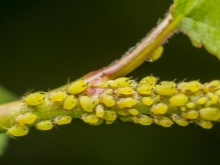
Excessive waterlogging of the soil and thickening can lead to the development of such a dangerous fungal disease as fusarium wilting. It is very difficult to fight this ailment, since most of the chemicals are not able to cope with it. The only option is to completely remove the affected bushes in order to avoid its further spread.

The most dangerous pests of vegetable crops are slugs and snails. Eternally hungry shellfish can destroy almost the entire crop, spreading the infection. Experienced summer residents bring small sheets of slate into the greenhouse and install them between the rows. A large number of them gather at them during the day.

Destroyed slugs and snails do not need to be removed. The new pests that have come to replace them are happy to eat the killed relatives, giving time to fight them.
Another insidious pest is the bear. It often appears on an area with contaminated soil, such as purchased humus. Therefore, do not rush to transfer organic fertilizer directly to the greenhouse. The heap must be treated with special preparations against parasites. To do this, you can take any container and spill it with a diluted solution.
Medvedka prefers to arrange nests in pig or cow dung, categorically does not tolerate chicken manure, since it is very sour.
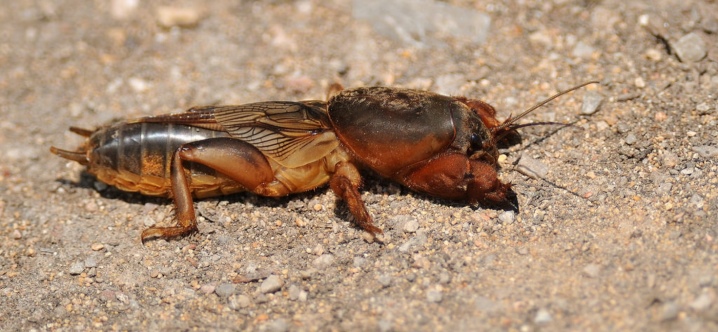
Features of formation
The formation of bushes makes it possible to keep more light in the room, so the bushes get sick less and are better ventilated. With regular pruning, you can not only increase yields, but also prolong fruiting.
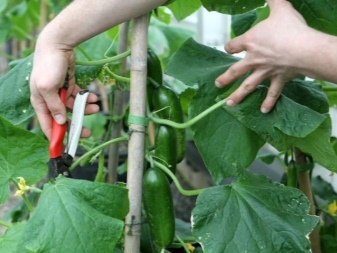

Planting scheme for cucumbers - 2-3 plants per 1 sq. m., pepper - 3-4. In no case should excessive thickening be allowed. This can lead to disease development and cross-crop infection.
Cucumbers are formed into 2 stems, as they develop, remove excess shoots, yellowed foliage. So more nutrients will go to the setting of the ovaries. Tie the plant to the support carefully. Shoots are very fragile - they are easy to break. Control binding is carried out once a week.
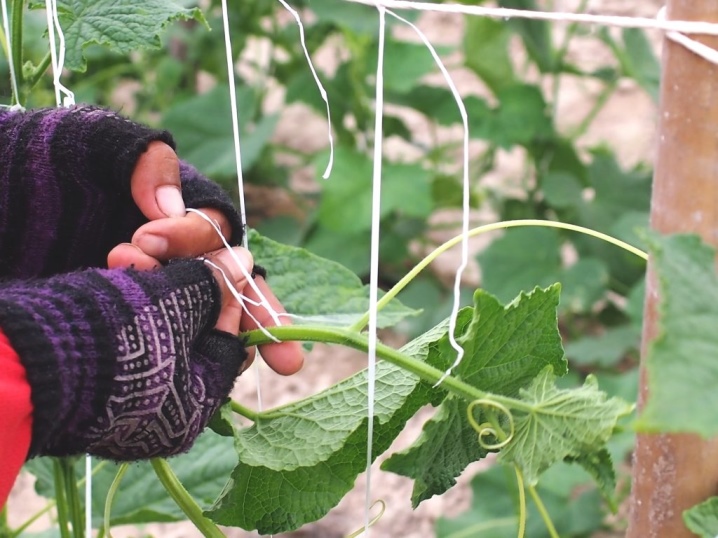
As a rule, nightshades are formed in 2 stems, less often in 3. When they reach a height of 50 cm, pinch the top, then they will become more fluffy and compact. To stimulate the formation of more ovaries, the upper bud is torn off. Extra leaves and empty inflorescences are also subject to removal. Lateral shoots are pinched, weak ones are cut off so that the culture will put all its strength into the formation of fruits.














The comment was sent successfully.